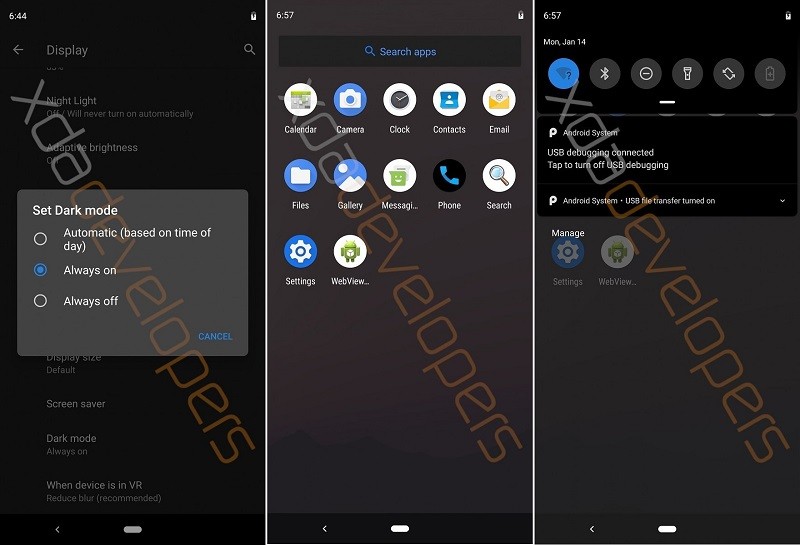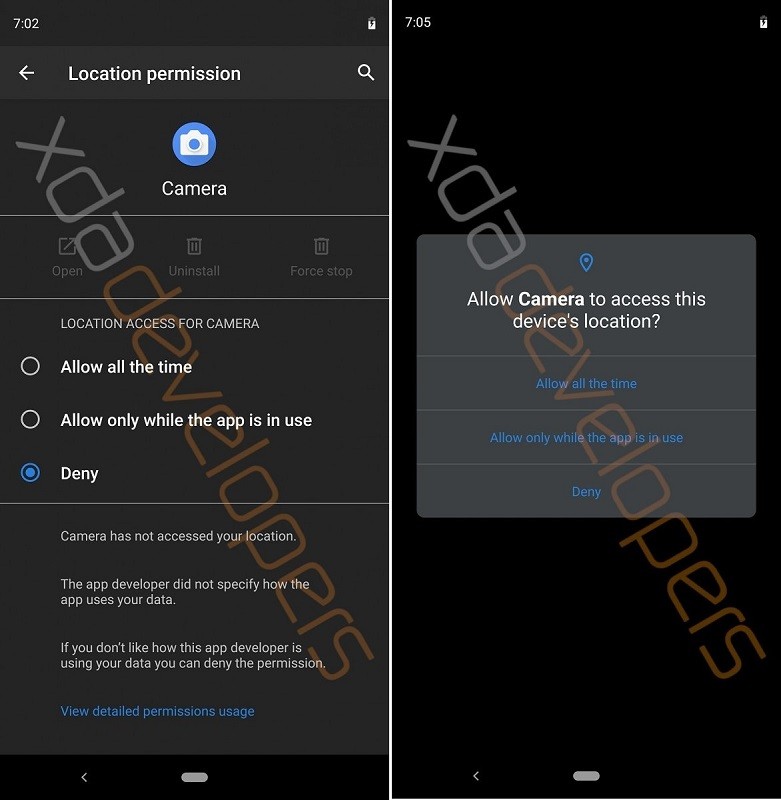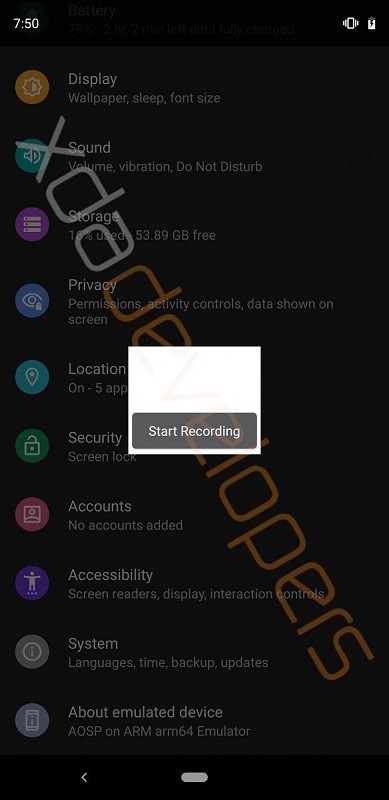Mountain View-based Internet giant Google released Android 9.0 Pie last year in August, and, we will hear more from Google about the next version of Android, i.e., Android Q, in May this year at its Google I/O developer conference. Well, even though there’s no word from Google about Android Q, the company has already started working on it as a leaked build of Android Q has revealed some interesting features about this next version of Android.
System-wide Dark Mode

The folks over at XDA-Developers have got hold of a leaked build of Android Q, and, upon flashing this build on their Google Pixel 3 XL, they discovered some new features – with the first one being the system-wide dark mode.
Yes, Android Q will finally bring in a system-wide dark mode. This has been a highly requested feature by the users, and it looks like Google will finally give the Android clan what they have been asking for a long time.
The option to enable the dark mode in Android Q is currently tucked inside the Display settings. Under this menu, there’s an option called “Set Dark mode” that lets users keep the dark mode always on, or have it turned on and off automatically based on the time of the day.
XDA reports that once the dark mode is enabled, the “Settings, Launcher, Launcher settings, and Files app all gain a dark gray tinge”, whereas the “volume panel, Quick Settings panel, and notifications all turn black”. Even notifications from third-party apps turn black.
Some Google apps like Phone, Contacts, Messages, and YouTube already have native support for Dark Mode, however, it’s currently unclear if enabling a system-wide dark mode in Android Q will enable dark mode in these apps or not.
What’s worth noting is that Android Q also has an option called “override force-dark” which enables dark mode for apps that don’t have a built-in dark mode option.
App Permissions Revamp

With Android 6.0 Marshmallow released in 2015, Google gave more power to users over controlling app permissions by introducing granular app permissions With Android Q, Google has taken it up a notch.
The leaked build of Android Q has revealed major app permissions revamp. Until now, you only had two options when it came to granting app permissions – allow and deny. But with Android Q, Google has introduced a third and much-needed option — to grant a specific app permission only when the app is in use.
For example, if you are adding location to your Instagram post, you will be able to allow location access to Instagram only when it’s in use. The app won’t be able to access your location when it’s not in use. This should help prevent malicious apps from accessing your data. Furthermore, this should also come as a sigh of relief to those who think that a particular app is spying on them using their phone’s microphone, because that app will only be able to access your phone’s microphone when it’s actually being used.
Desktop Mode
The leaked build of Android Q also has a new option called “force desktop mode” under the Developer Options that lets you “force experimental desktop mode on secondary displays”. This sounds similar to Samsung DeX that lets users get a desktop-like experience by connecting their smartphone to an external monitor. However, this desktop mode on Android Q doesn’t do anything for now.
Built-in Screen Recorder

Apple introduced built-in screen recording with iOS 11 back in 2017, and, it looks like Google too will introduce this feature on Android with Android Q. For now, the built-in screen recorder can be accessed by long-pressing the screenshot button in the power menu, and, XDA reports that the UI is unfinished. However, we expect Google to improve on this with the future builds. After all, this is a leaked early build of Android Q, so obviously things aren’t going to be up to the mark right now.
Other stuff
Android Q also has a new “Game Update Package Preferences” setting that lets users select a graphics driver. Furthermore, users can also choose to display their current wallpaper on the Always on Display. This feature is currently only available on third-gen Pixel smartphones. And, speaking of Always on Display, the option to turn it on has now been moved to Display > Lock screen menu.
Android Q also has two new settings added to its Accessibility page related to notifications – ‘Time to take action’ and ‘Time to read’. The former lets you choose “how long to show messages that ask you take action”, whereas the latter lets you choose “how much time you want to read and take action on messages”.
Apart from this, there’s also a new “Sensors off” option in Quick Settings that probably turns off all the sensors of a smartphone, including the ones like accelerometer and gyroscope.
The built-in files app has also got filters that let you find different files like images, videos, and documents easily.
You can head over to the source link below for more details.
